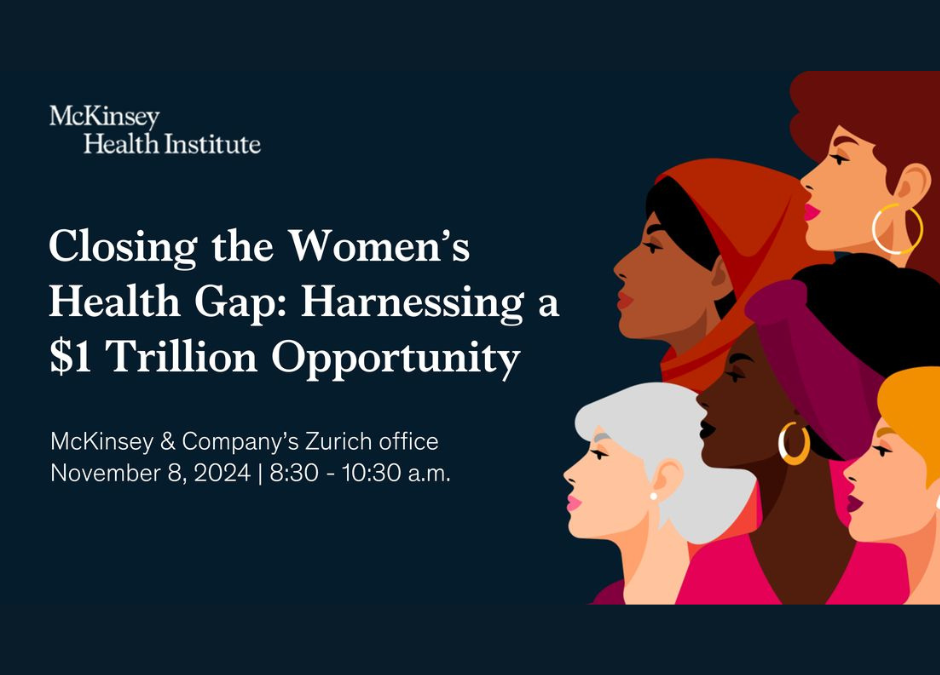By Nana Diarra dit Konté,
For many women, becoming a teenager begins their unique health journey, which will be punctuated by experiences like menstruation, pregnancy, or menopause. But there is more to women’s health, and some will face challenges like sexually transmitted infections (STIs), female cancers, and other conditions that affect women disproportionately. Poor health among women has far-reaching consequences, including significant economic and financial impacts. In 2024, in collaboration with the World Economic Forum, McKinsey released a report titled “Closing the women’s health gap: A $1 trillion opportunity to improve lives and economies”.
For the report’s authors, Anouk Petersen, and Valentina Sartori, diversity is key in addressing the gender health gap, and their commitment led them to strike a collaboration with PROWAH. Our association brings together women of African heritage, and advocating for their physical, mental, and emotional health is paramount to us. The partnership culminated in a Women’s Health Breakfast in Zurich—a powerful event focused on bridging gaps in women’s healthcare and addressing the unique challenges women of color face.
What is the women’s health gap?
To understand the issue, let’s start with some key definitions:
- Health: The World Health Organization (WHO) defines health as “a state of complete physical, mental, and social well-being, and not merely the absence of disease or infirmity.”
- Disability-adjusted life years (DALYs): A measure of overall disease burden, one DALY represents the loss of one year of full health.
- Clinical trials: Studies conducted to test new treatments and evaluate their effects on human health outcomes.
Women spend 25% more of their lives in poor health than men. Conditions such as painful menstruation, female cancers, and endometriosis contribute to a global gender health gap of 75 million DALYs. This translates to an additional seven days per year of health burden for every woman.
What are the Root Causes of the Gap?
- Science: Medical research often defaults to male physiology, leading to treatments and diagnostics that are less effective for women.
- Data: Gaps in data collection, particularly around self-reporting and differences in race and ethnicity, exacerbate disparities.
- Care Delivery: Women face limited access to healthcare in many regions and delayed diagnoses due to atypical symptom presentations.
Investment: The funding of women’s health issues is disproportionately low compared to their prevalence.
Intersectionality in gender health gap.
The gender health gap disproportionately impacts Black women, exacerbating existing racial and socioeconomic disparities in health. Together, socioeconomic status, geographic location, migration, racism, and limited access to medical care lead to systemic inequities [1]. Black women face higher rates of maternal mortality, and reproductive health challenges. For example, fibroids occur earlier, grow larger, and are more prevalent in this group [2]. In sub-Saharan Africa, where nearly two-thirds of global maternal deaths occur, almost half of women lack essential healthcare during pregnancy and childbirth [3]. STIs, nutritional deficiencies, and anemia are other serious concerns in this region. A multifaceted approach is necessary to address these disparities. We can improve the situation through equitable access to care, culturally informed medical practices, and increased representation in healthcare [4].

How do we bring about change?
What can pharma companies DO?
Carla Pearson, VP and General Manager of GSK Switzerland, who was part of the panel discussion during the breakfast, presented some of her company’s internal and outreach initiatives toward closing the health gap. Through the Women Leadership Initiative (WLI) or the Employee Resource Groups (ERGs), GSK brings diversity among decision-makers and fosters the emergence of new ideas, priorities, and perspectives. Research & Development and clinical trials must also be conducted with equity and women in mind. One way is to repeat clinical trials to make sure that drugs are as effective on female as male patients. For example, a follow-up study was conducted on an approved lupus drug to prove its efficacy on African American and Hispanic populations [5].
Another way to leverage data is to reanalyze existing ones, as in most health-related studies, minorities are underrepresented, and aspects like gender and ethnicity are overlooked. Finally, pharma companies must make clinical trials more inclusive. Providing child care and transportation or involving the patient’s community during treatment are simple measures that are easy to implement. Said measures can positively impact women’s enrollment and compliance with clinical trials. No change will happen in the industry without committed leaders like Mrs Pearson. Decision-makers must be steadfast in pushing for more investments in research on gender differences to ensure better outcomes for women.
What about medical practitioners?
The role of medical practitioners is central in closing the gap, stressed Dr. Valery Bogne Kamden, Gynecological Surgeon and Maternal Health Specialist, as they are on the front line of delivering care. Yet, their theoretical knowledge is sometimes lacking, particularly for women of color’s care. There is a need to shift focus to practical and patient-centered approaches. It is important to encourage dialogue with female patients and get the community involved to understand their needs and provide better care for better health outcomes. This response will also help reduce the defiance toward medical professionals and facilitate interactions.
Entrepreneurs play a role, too.
The third panel member Dr. Antonella Santuccione Chadha, founder of the Women’s Brain Foundation, demonstrated how a non-profit can act as an incubator and accelerator of innovation. An entrepreneur mindset is vital to closing the gap. As illustrated in McKinsey’s report, this could generate a potential $1 trillion increase annually by 2040. That is why supporting female innovators, who currently represent less than 15% of startup founders, is essential.
Public authorities are also major players, and public initiatives like the Swiss Health Network for Equity are strong drivers of change. Their mission is to promote equal access and quality care for all patients. Fostering equity and empowering patients will compel better health outcomes for all women. That is why lobbying groups and patient self-advocacy associations also have a role to play in influencing policies.
We all Do
To close the women’s health gap, we are all catalyzers of change. Simple vocabulary adjustments can create new narratives. Saying “maternity service” instead of “maternity leave” empowers young mothers. By sharing knowledge, we can improve health literacy and patient education within our communities.
References
[1] https://pmc.ncbi.nlm.nih.gov/articles/PMC1447123/
[2] https://pmc.ncbi.nlm.nih.gov/articles/PMC3787340/
[3] https://pmc.ncbi.nlm.nih.gov/articles/PMC8442509/

